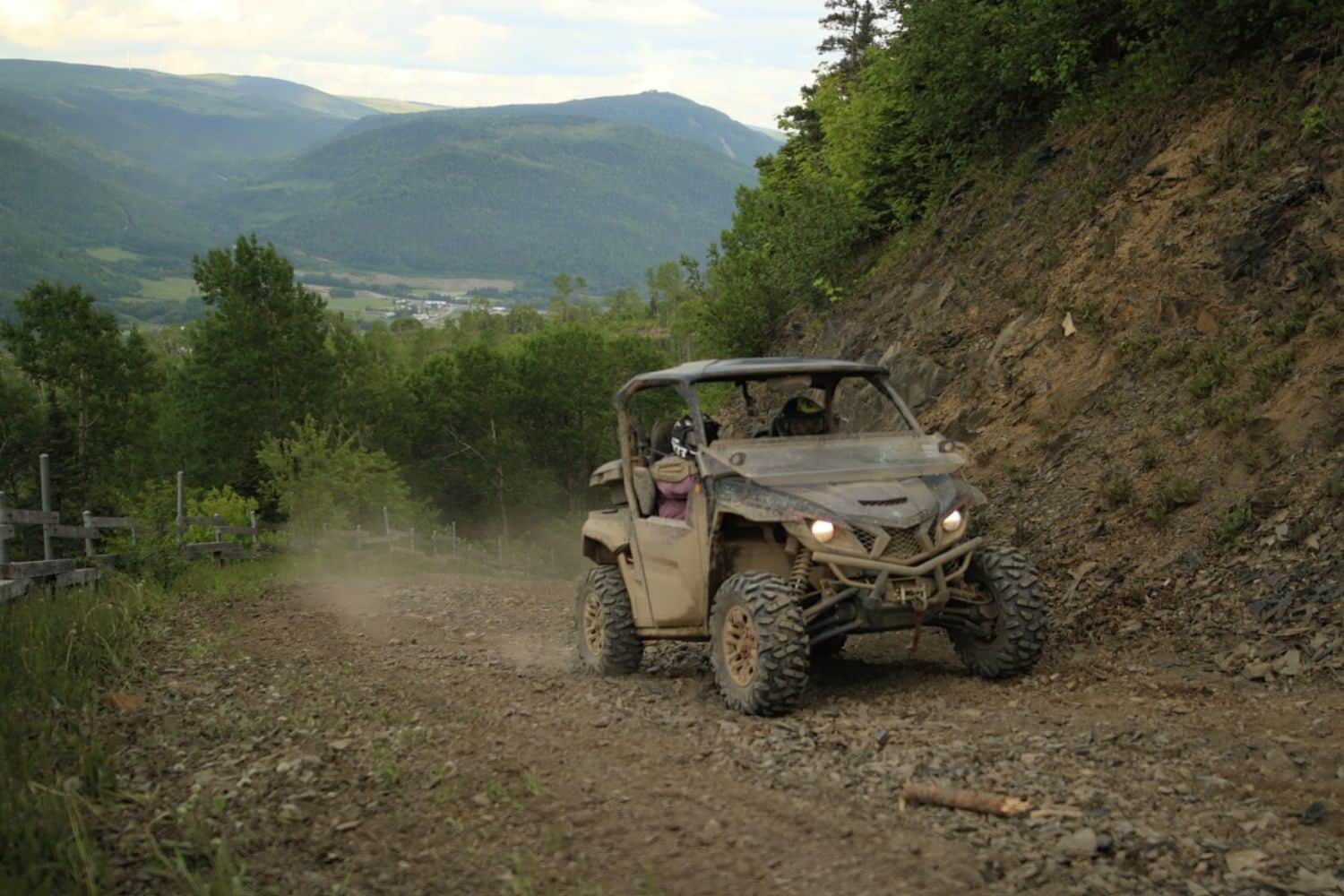For several years now, Yamaha has been rolling out the Wolverine X2 850 on the trails, and it’s been a big hit with ATV riders. Last year, Yamaha engineers had the bright idea of slipping the Wolverine RMAX’s 1000 cc engine into the small Wolverine’s chassis.
Thanks to the kindness of Mr. François Morneau and Yamaha Motors Canada, we were able to try out the Wolverine X2 1000 SE on a seven-day trip around the Gaspesia peninsula, with two passengers and their luggage. This 1400-kilometer journey will highlight the strengths and weaknesses of this vehicle.
Body and finish
The 1000 cm3 powered Wolverine X2 is only available as a two-passenger model in the more stripped-down R-SPEC and SE trim levels, which come with essential equipment. If you want a four-passenger version, you’ll have to accept the 850 engine or buy the larger RMAX.
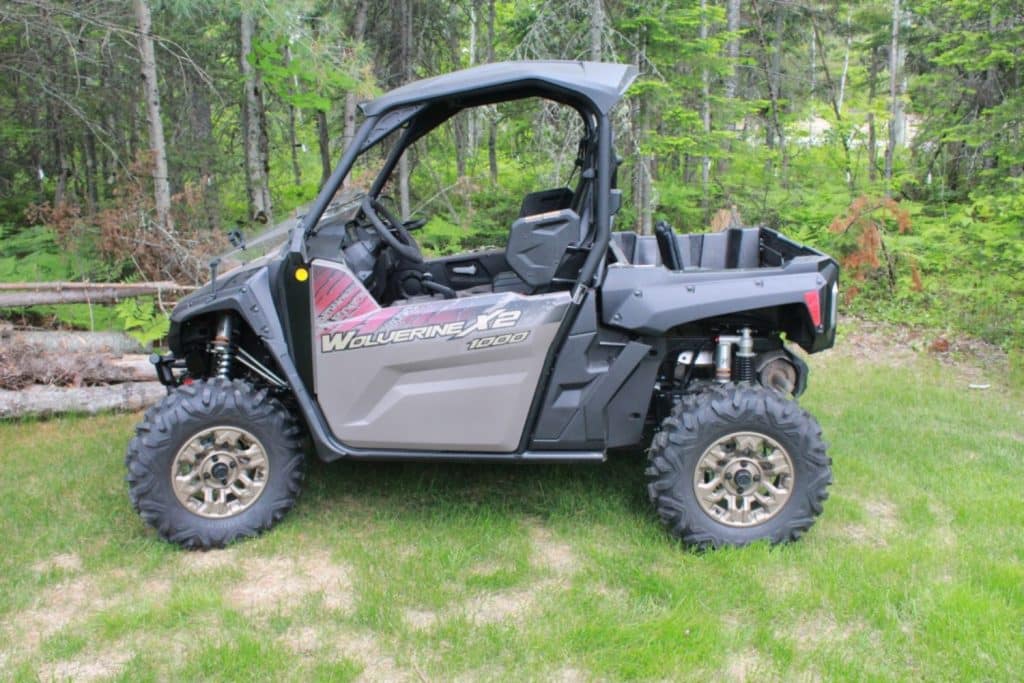
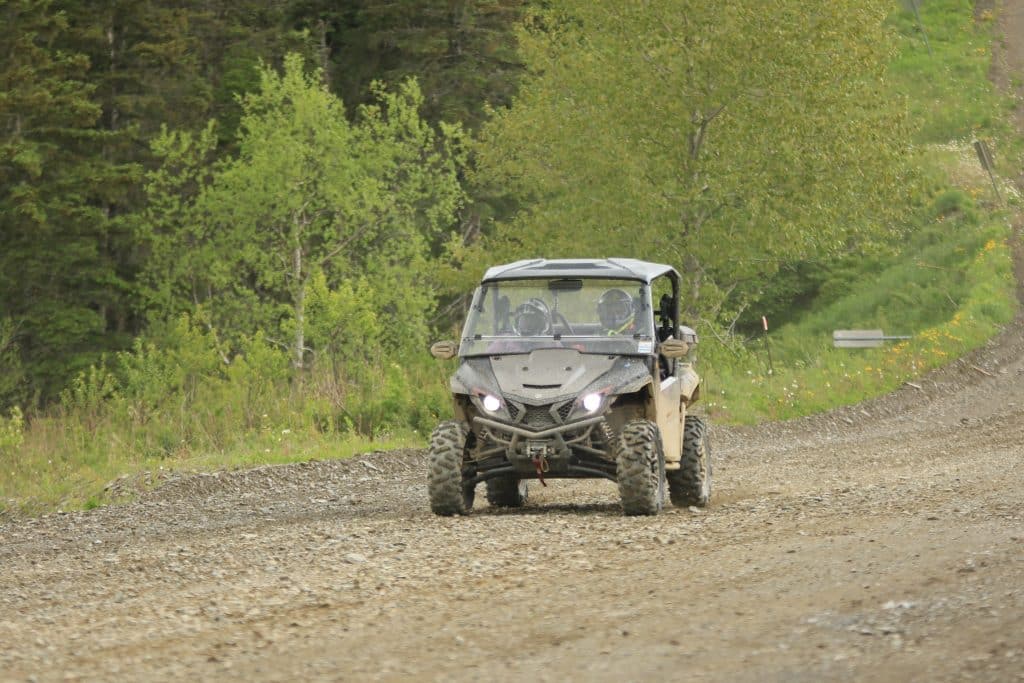
Already on the market for nine years, the vehicle’s appearance hasn’t aged a day, thanks to its consensual body design. The sloping hood, which plunges towards the LED headlamps and accentuates their menacing frown, may be a reference to the Wolverine name, but it produces a fine, deliberate effect. Further emphasizing the vehicle’s adventurous look, the front end is also fitted with a bumper housing an electric winch. A closer look at the bodywork and mechanical assembly reveals that Yamaha has not skimped on the quality of its components or their workmanship. If you lift the front hood, you’ll see that all the components requiring maintenance have been grouped together: battery, fuse panel, air filter, radiator filler cap, small emergency tools. A fine piece of work.
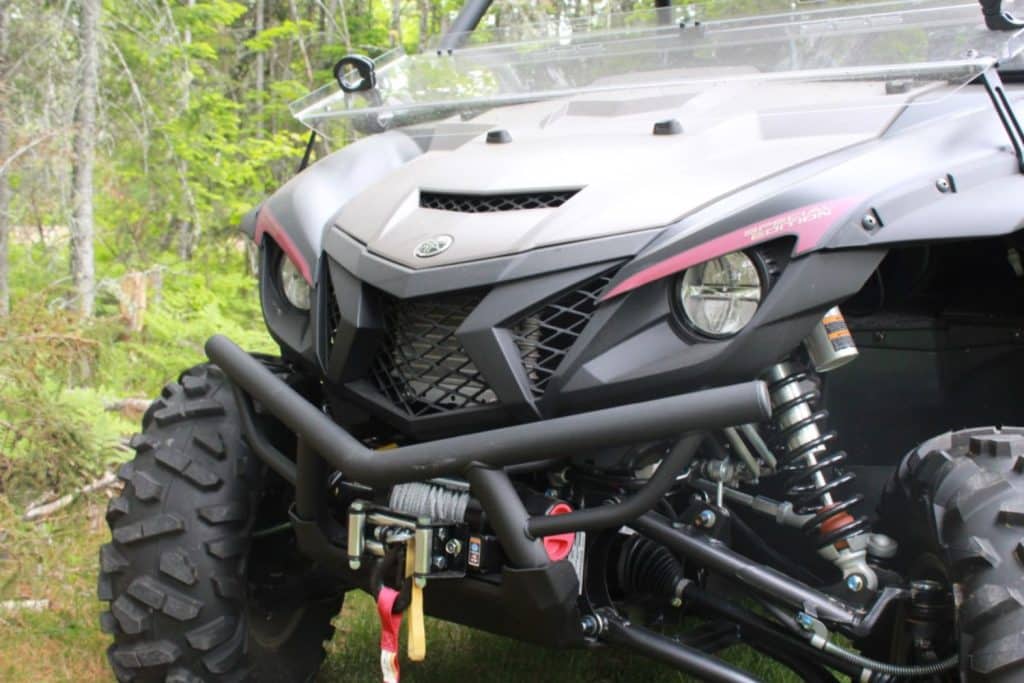
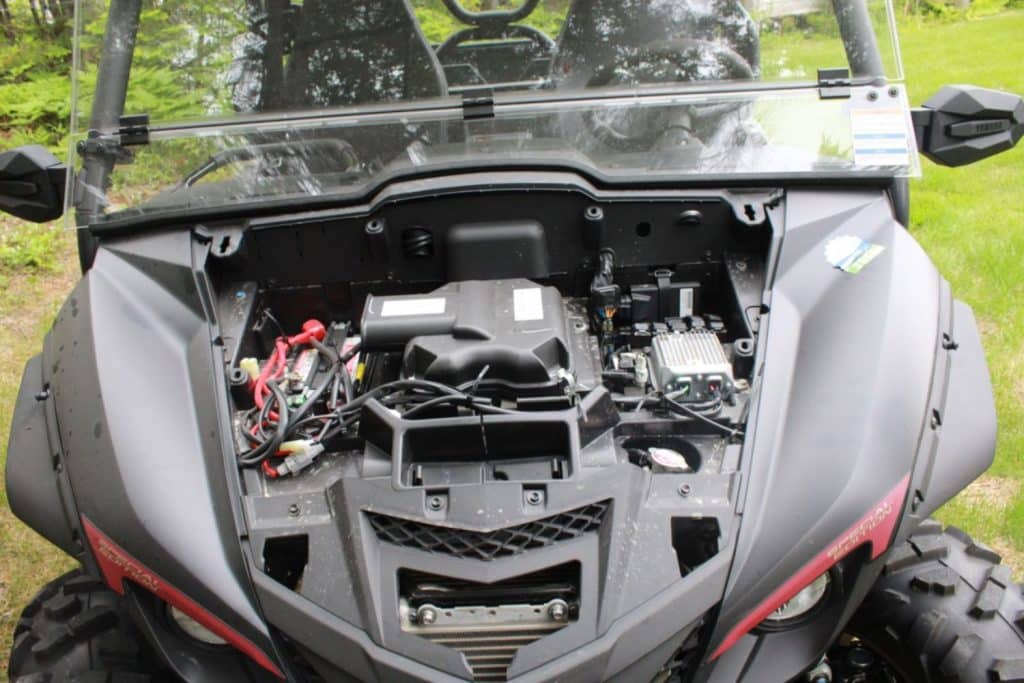
Getting behind the wheel is easy, even for a 1.90-meter-tall man. The rather high, upright seating position leaves plenty of legroom, especially as the driver’s seat features a 3.9-inch fore-and-aft adjustment. Likewise, the steering column is equipped with a lever that enables its height to be adjusted over a good range. The buckets prove comfortable even after several hours of riding.
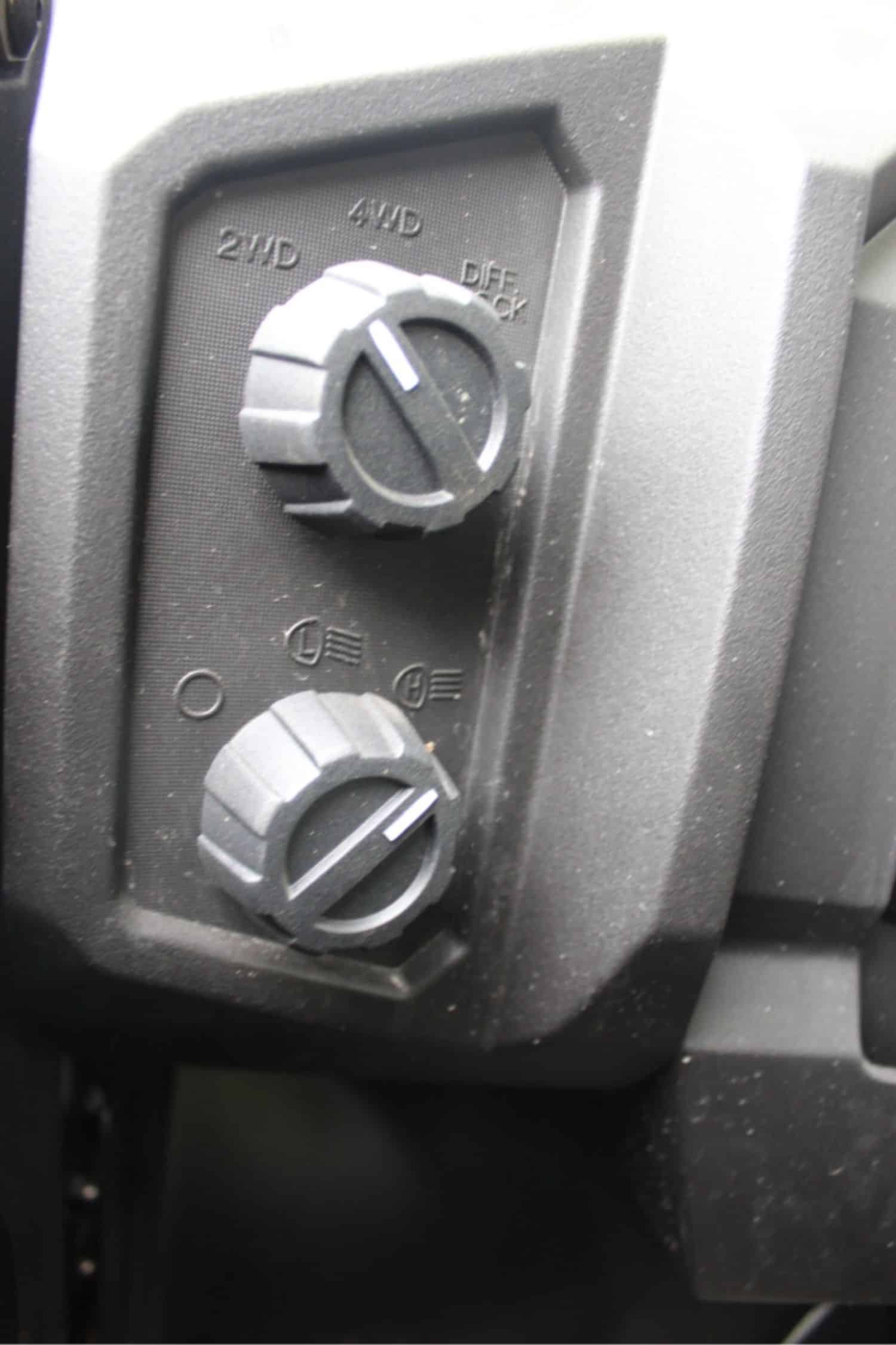
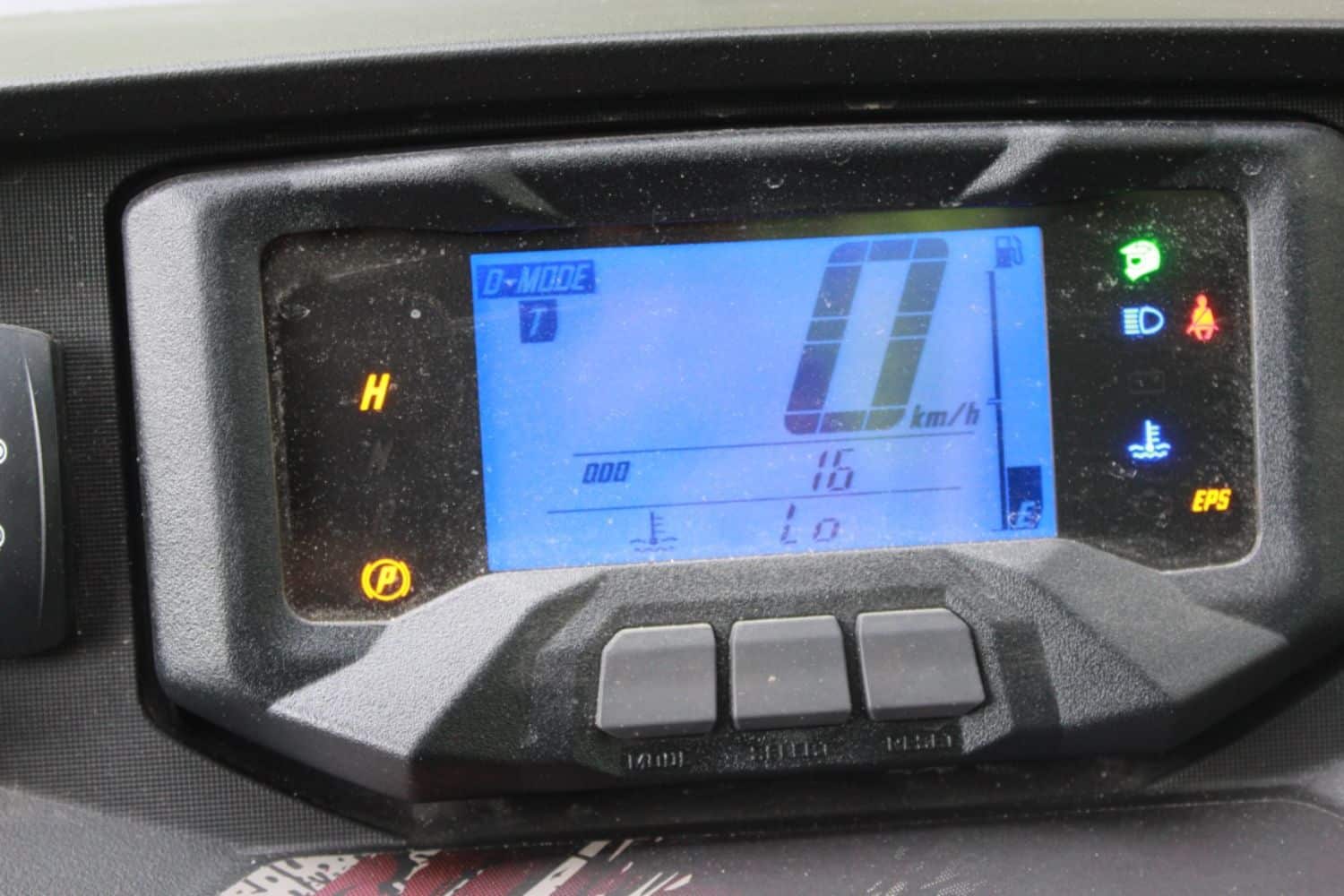
Once installed, the driver finds himself behind a rather austere but fully functional dashboard. To the left of the steering wheel are two large round switches: the first controls the vehicle’s traction system (2WD, 4WD, Differential Lock) and the second controls the headlights (Off, Low beam, Hi beam). On the right is the winch button and indicator dial. Although menu-driven, the latter gives the driver all the information he needs: seatbelt and helmet reminder indicator light, speed (main information), fuel level, odometer with two trip meters, traction mode and gear ratio engaged, and in a submenu with selector button: voltage level, engine revolution, engine temperature. There’s also a 12-volt socket for connecting accessories.
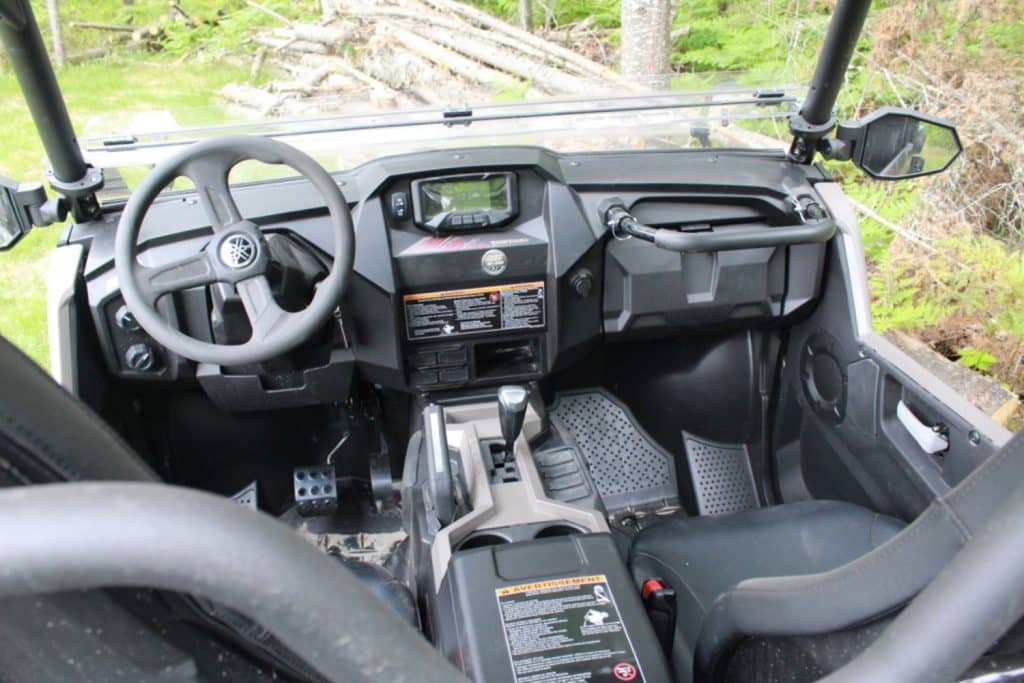
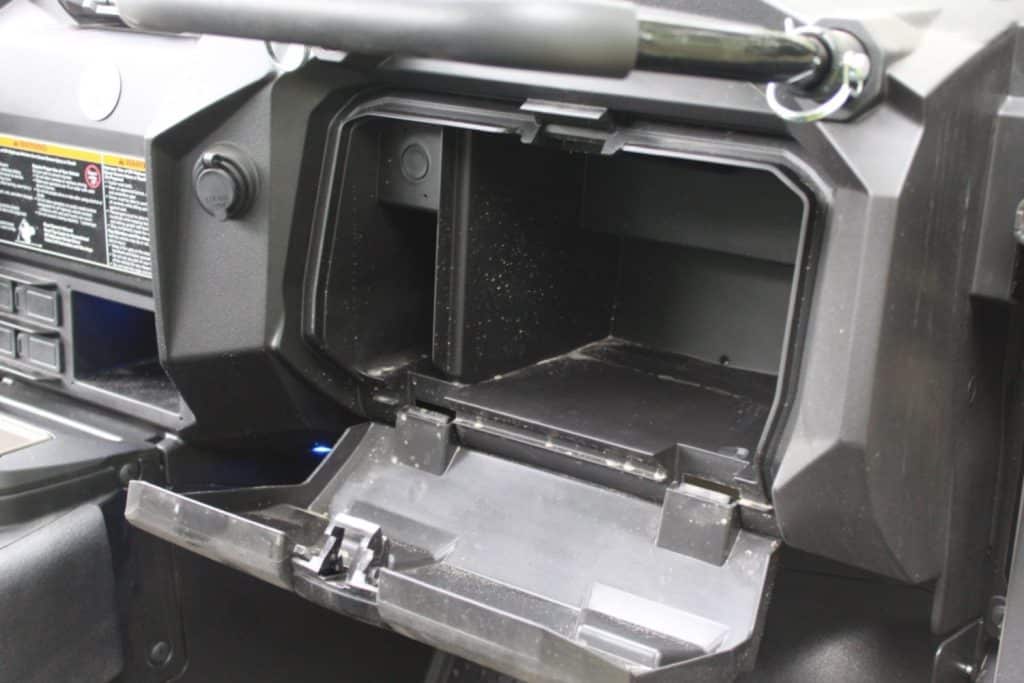
The two seats are separated by a wide console housing the parking brake lever and gear selector lever. It also contains two efficient bottle holders that held our water bottles all week, and a storage space that will only accommodate a few small, slender items. The lid of this storage space forms an armrest which is just the right height and is fully usable. Finally, a watertight glove compartment in front of the passenger completes the front storage space.
Continuing our tour of the vehicle, we are pleased to note that it is equipped with full factory-fitted rigid doors that will effectively protect passengers’ legs from wheel splashes. It also comes with a factory-fitted plastic hardtop. Finally, we turn our attention to the body, which is equipped with a rear panel and LED red lights. This medium-sized body can be tipped and, interestingly, is fitted with threaded anchoring holes for accessories in the floor. We used these to secure our temporary trunk.
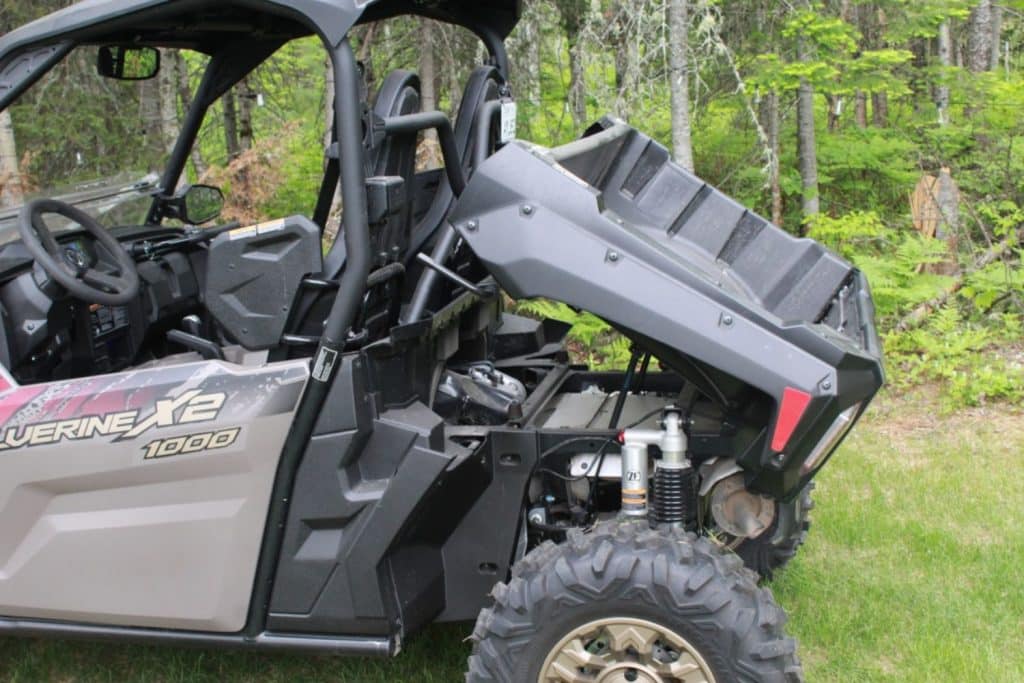
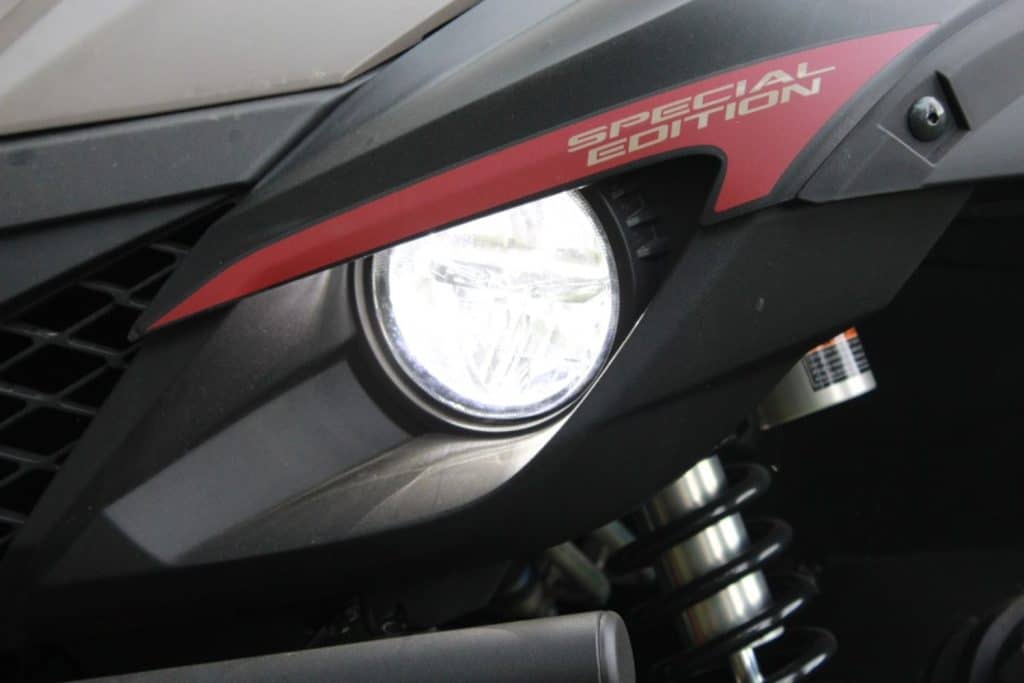
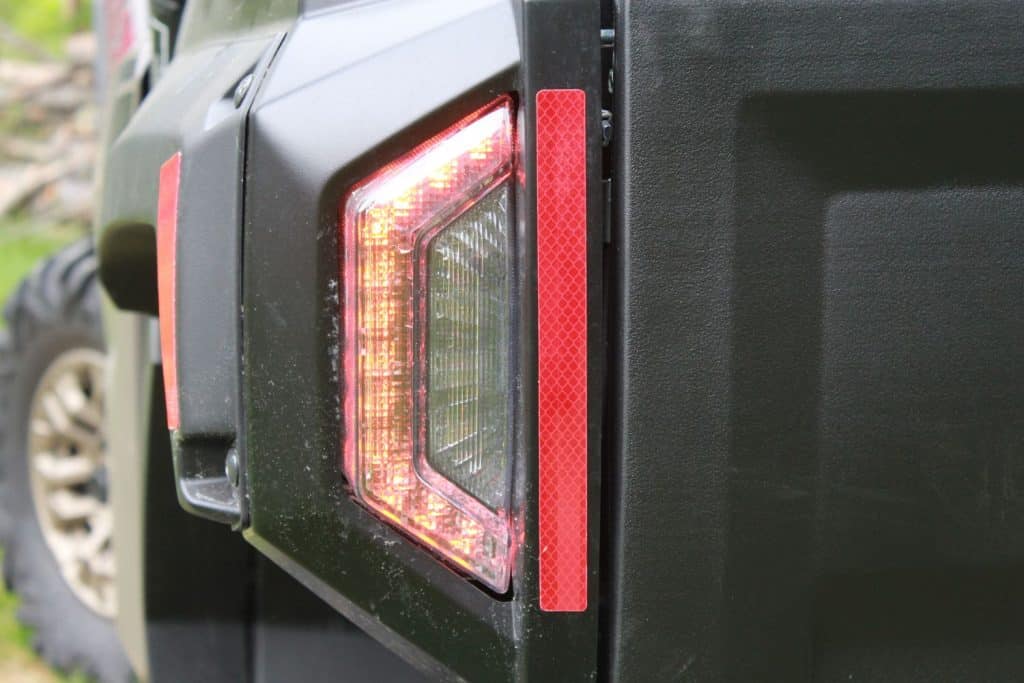
The optional equipment added to the vehicle was limited to the central and side mirrors and the folding polycarbonate windscreen. This equipment is of excellent quality, but the side mirrors are positioned very low on the safety cage posts. They are quickly made useless by mud splashes from the wheels.
Engine, transmission and suspension.
As mentioned above, the Wolverine can house the 1000 cc two-cylinder engine of its big brother, the RMAX, in two-seater configuration only. This engine radically changes the character of the Wolverine X2. The 850 cc engine has a tidier character and is quiet in its operation, while the larger engine is noisier, but moves the vehicle much more purposefully. This engine adopts a compact in-line configuration with electronic fuel injection, breathing through four valves per cylinder and producing 108 horsepower, making it the leader in its class. That’s eight more horsepower than the Polaris General or Can-Am Commander 1000, and 39 more than the Wolverine X2 850!
The Wolverine is equipped with the Ultramatic CVT transmission, which is one of the best, if not the best, continuously variable transmission on the market. It has proven exemplary reliability for over 30 years, and Yamaha guarantees it for 10 years. This is a transmission with a constant-mesh belt that doesn’t jerk when in use. The transmission has a high and low range, selected from the gearshift. Four-wheel drive can be selected while driving via the selector wheel on the dashboard. This dial also locks the front differential. With the Wolverine X2 1000, the riding mode selection (Crawl, Trail, Sport) is not offered from the outset, and the only mode available is Trail. However, for a few hundred dollars, you can have a riding mode selector installed at a dealership.
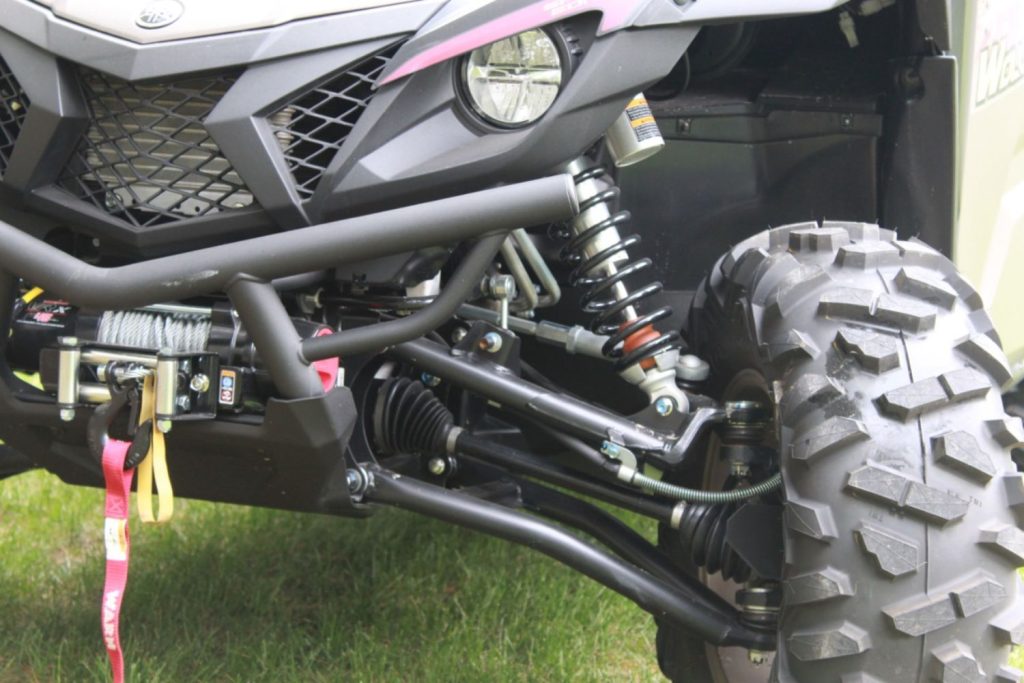
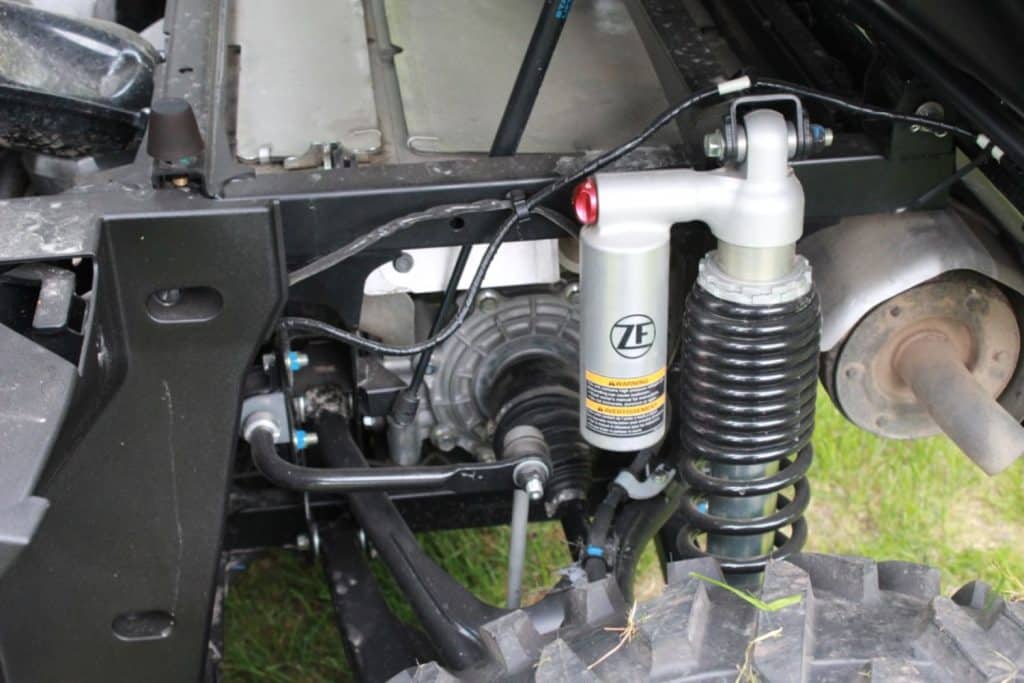
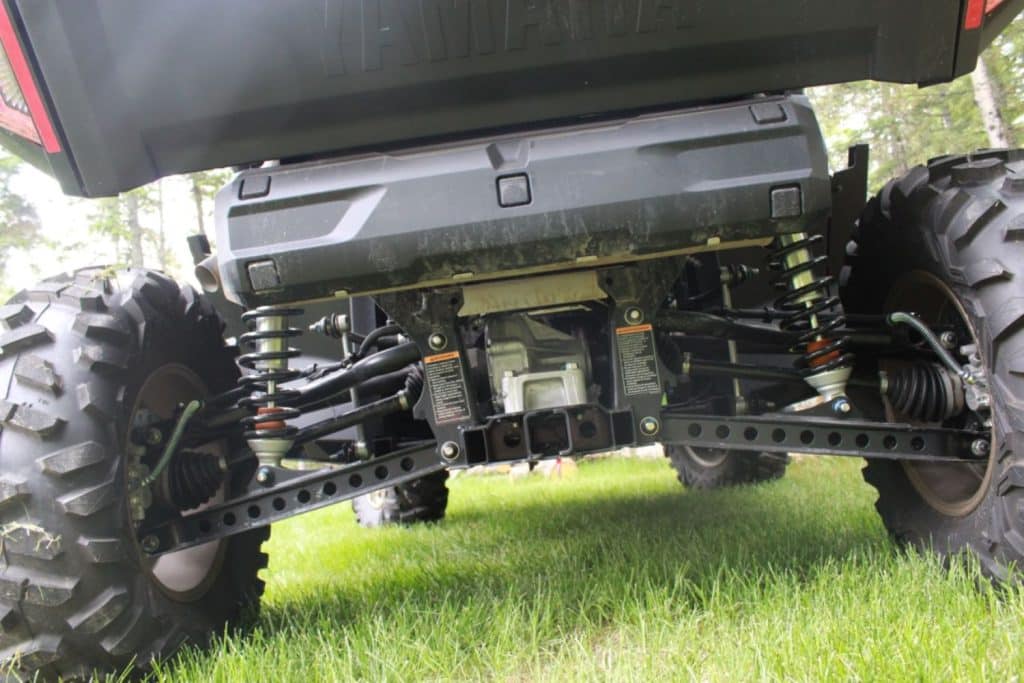
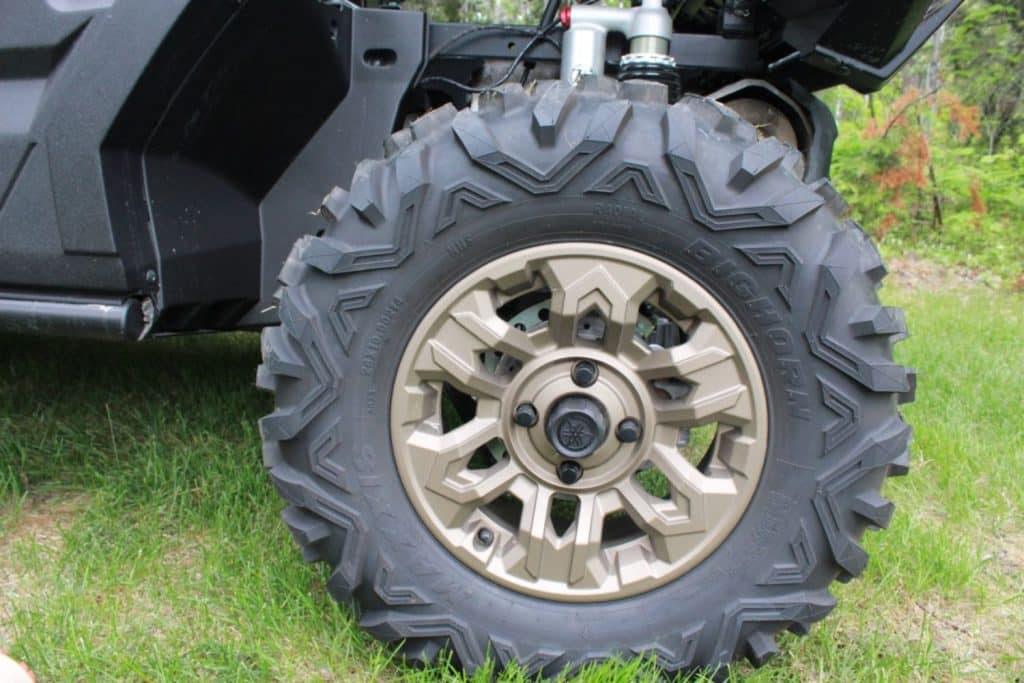
The technical solutions implemented for the suspensions are not to be outdone. Front and rear, we find a double-wishbone suspension with anti-roll bar and gas-adjustable ZF shock absorbers. Suspension travel is 8.7 inches at the front and 9.3 inches at the rear. Ground clearance is an impressive 12.5 inches. Finally, the tires are fairly modest in size, but strong. They are 27-inch GBC Dirt Tamers on 12-inch-diameter aluminum rims.
Trail handling
As already mentioned, getting into the Wolverine X2 is no problem at all. Once you’ve fastened your seatbelts, turn the key to start the engine and you’ll find that it performs with the utmost civility. Although noisier than the 850, there are no vibrations transmitted to the vehicle. Yamaha’s efforts to control NHR (noise, hardness vibrations) in the exhaust and rubber engine mounts are paying off. When engaging the transmission gear, we also appreciate the absence of response lag, which contributes to the vehicle’s overall operating precision. In sustained acceleration, the engine’s thrust is first and foremost appreciated, with a very good tone that pulls hard right up to its electronically limited top speed of around 105 km/h. Whether you’re riding on the flat or on long inclines, power is always optimally delivered, as the transmission works in symbiosis with the engine. Without being a resolutely performance-oriented machine, the 1000 cc engine propels the vehicle in a voluntary way that puts a smile on your face.
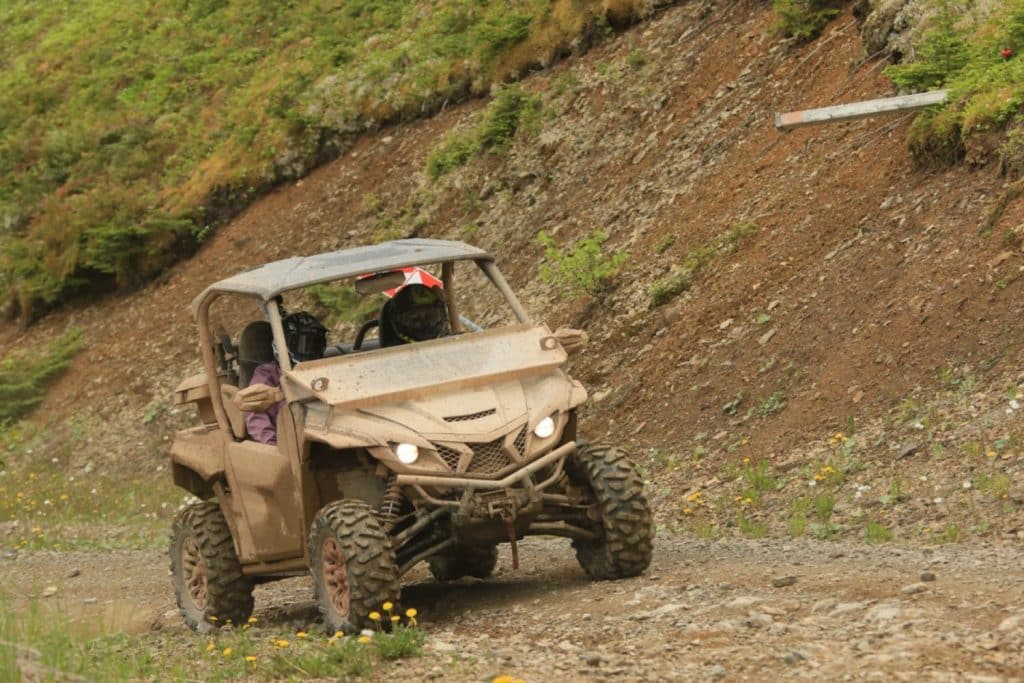
The suspension does an excellent job of controlling body movements. We were worried about the suspension’s limited travel, but it was nothing to worry about. In fact, it absorbs bumps and cracks well at cruising speed. The comfort level is such that the passenger allowed himself naps on the road a few times during the trip! At no point during the 1400-kilometer trip, and despite the sustained pace, did the suspension ever come to grief. The tire sidewalls and ZF gas shock absorbers do an excellent job. The latter effectively control bouncing and eliminate the bouncing we noticed on a Wolverine 850 in a previous test.
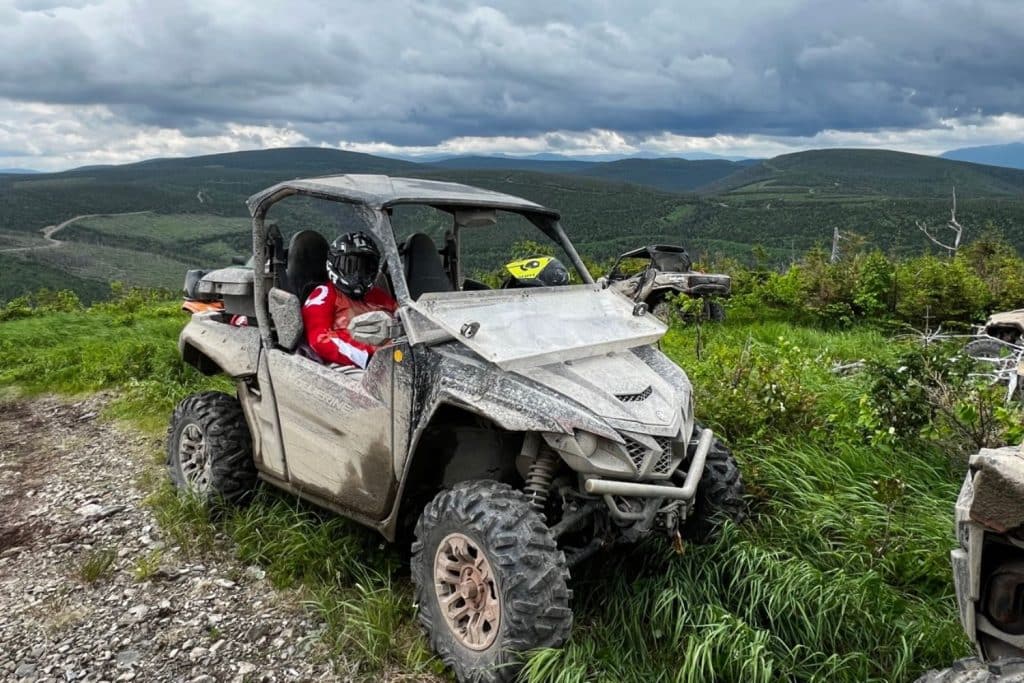
When cornering hard, roll is very well controlled, which is reassuring for the rider in a succession of bends. The steering is equipped with a power steering system that is precise and gives a good feel for what’s going on under the wheels. It allows you to place the vehicle precisely where you want it on the trail.
The symbiotic operation of the mechanical components makes this a very sound vehicle that’s very forgiving to the driver. The Wolverine X2 1000 SE offers occupants a relaxed touring experience, and is easy to move around in. What’s more, being more compact than the big RMAX or Polaris General, it’s easier to squeeze through tight trails or narrow walkways.
We really like:
- The vehicle’s overall balance, which makes it a competent machine in all situations.
- Occupant comfort in the cab
- Overall build quality
We dislike
- The side mirrors are too low and get dirty very quickly from front-wheel projections.
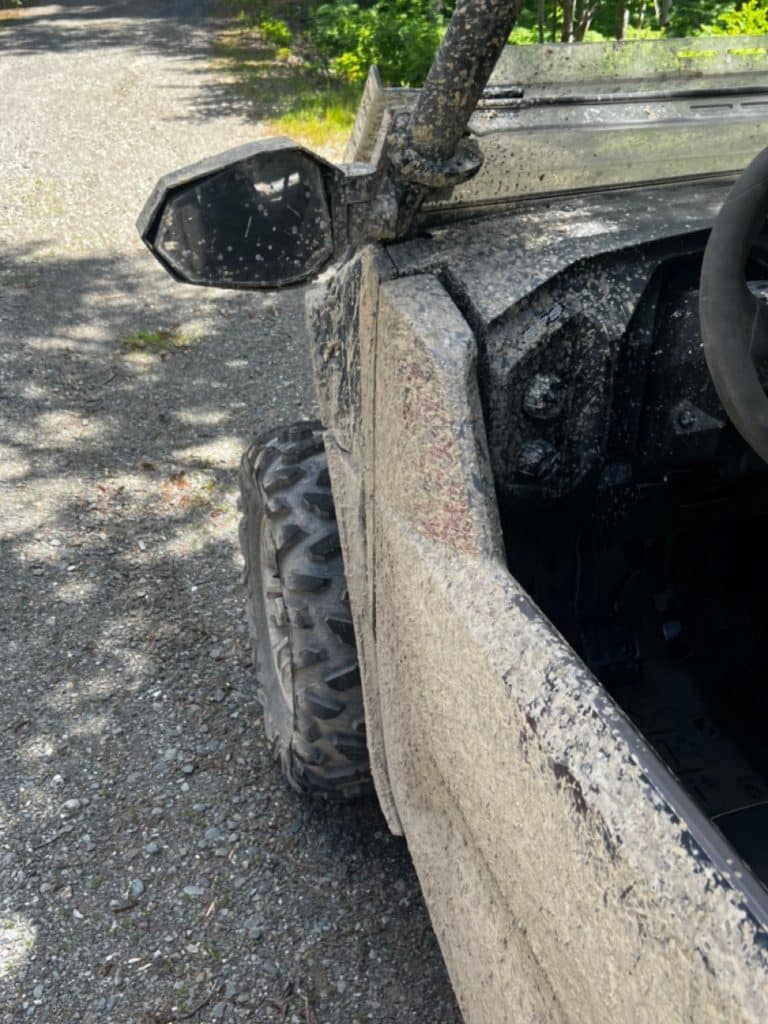
In conclusion:
Testing the Yamaha Wolverine X2 1000 SE over a seven-day, 1,400-kilometer road trip was a pleasant experience that allowed us to appreciate the high level of quietude and overall refinement when driving this vehicle. It offers a good amalgam of performances that will satisfy the vast majority of UTV users: more than adequate power when required, very good levels of comfort and sure handling in addition to generous interior space. With the Wolvie, Yamaha offers a highly competent vehicle that has not been developed to keep up with the search for power, but rather to offer the versatility of a Swiss Army knife in an environment that is as peaceful as possible.

We’d like to thank Yamaha Motors Canada for making this test ride possible. yyyy


